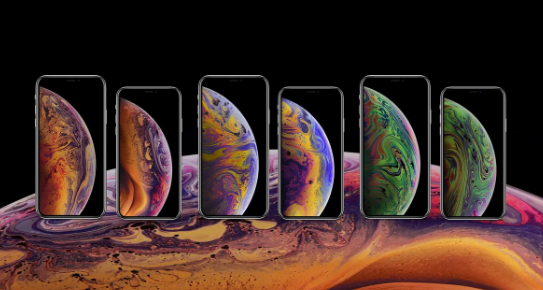The iPhone XS, iPhone XS Max and iPhone XR offer several new camera features. However, one feature which has been touted more than the others is the Focus Adjustment feature. Though Apple claims the iPhone XS Bokeh feature and iPhone XR Bokeh Adjustment feature are limited to the new iPhones, users with older models can also enjoy them.
What are the iPhone XS Bokeh and iPhone XR Bokeh Adjustment feature
When revealing the new Focus Adjustment feature, Apple claimed the new iPhone captures an “even more sophisticated bokeh” for professional-level results. Further, the company said to perfect the iPhone XS Bokeh and iPhone XR Bokeh Adjustment feature, it analyzed several high-end cameras and fastest lenses. Then it combined the results obtained with computational photography to develop a new depth slider, which became the Focus Adjustment feature.
Apple’s new Focus Adjustment feature is available when you open a photo captured in Portrait Mode. The iPhone XS Bokeh and iPhone XR Bokeh Adjustment feature allow you to adjust the photo’s depth of field after it is captured. The photo’s depth of field changes right in front of your eyes when you use the new Focus Adjustment feature. Users can change the photo’s depth of field from f/1.4 to f/1.6.
Focus Adjustment feature is not new
Though the iPhone XS Bokeh and iPhone XR Bokeh Adjustment feature are touted as being completely new, they are not. Several Android phones have had them for years now. Even Apple’s own App Store has an app that does something very similar by allowing users to take a portrait photo and then edit its depth of field. The app is called Focos, and it is available free on the App Store. Focos uses Apple’s depth-of-field API, meaning older iPhones can get similar results as those from the iPhone XS Bokeh and iPhone XR Bokeh Adjustment feature.
The iPhone X is capable of changing the depth of field in a photo. If you haven’t tried, give Focos a shot. It basically does the same thing as what Apple demoed for the XS.
Here are two example shots from my X. Left is f/5, right is f/1.4.
This does not require new hardware. pic.twitter.com/6Y45ADBetw
— Wojtek Pietrusiewicz (@morid1n) September 12, 2018
It remains to be seen if the iPhone XS Bokeh and iPhone XR Bokeh Adjustment feature work the same way and give the same quality images as demonstrated during the iPhone event. However, one thing which is clear is that the Focus Adjustment feature is not completely new for iOS. Thus, it will be interesting to see how much better the results provided by the iPhone XS Bokeh and iPhone XR Bokeh Adjustment feature end up being than those obtained by using Focos on older iPhones.
Smart HDR is another new addition to new iPhones
Along with the Focus Adjustment feature, the new iPhones also feature an improved HRD mode. HDR, which stands for high dynamic range, uses technology to merge multiple photos into one shot with the objective of getting better shadow details and bright highlights. Apple’s new iPhones come with Smart HDR, which it claims to be better.
According to Apple Marketing Chief Phil Schiller, Smart HDR selects from multiple source photos, including “interframe” shots at darker exposures. Such functionality enables it to ignore blown-out bright areas.
“It makes taking photos easier than ever to get beautiful results,” Schiller said, referring to the the new feature at Apple’s iPhone launch event.
Apple’s new A12 Bionic chip plays a vital role in making Smart HDR a success. The A12 Bionic chip performs image signal processing every time a photo is clicked. When a user takes a picture, a four-frame buffer is triggered internally, suggesting the processing is happening quickly with almost zero lag. Then using Neural Engine, multiple frames of the same shot are combined and spliced together, using the best parts of each frame and resulting in the best possible imagery.
Apple’s new Smart HDR is similar to Google’s HDR tech used in its Pixel smartphones. Google’s tech uses several underexposed shots for an HDR shot to manage highlights in photos.
Apple’s iPhone XS and XS Max come with a new dual-lens camera system, including a 12MP wide-angle camera with optical image stabilization (OIS) and a 6-element f/1.8 lens. The other telephoto camera is also 12MP with OIS, 2x optical zoom and a 6-element f/2.4 lens. The new iPhones also feature an improved True Tone flash with an advanced flicker-detect system.
The iPhone XR’s front-facing camera is also a big improvement over last year’s iPhones. The camera is fitted with a 7-megapixel lens and a faster sensor for higher-quality selfies. Faster sensors also mean it will be easier to scan and register your face for features like Animojis and Face ID.





